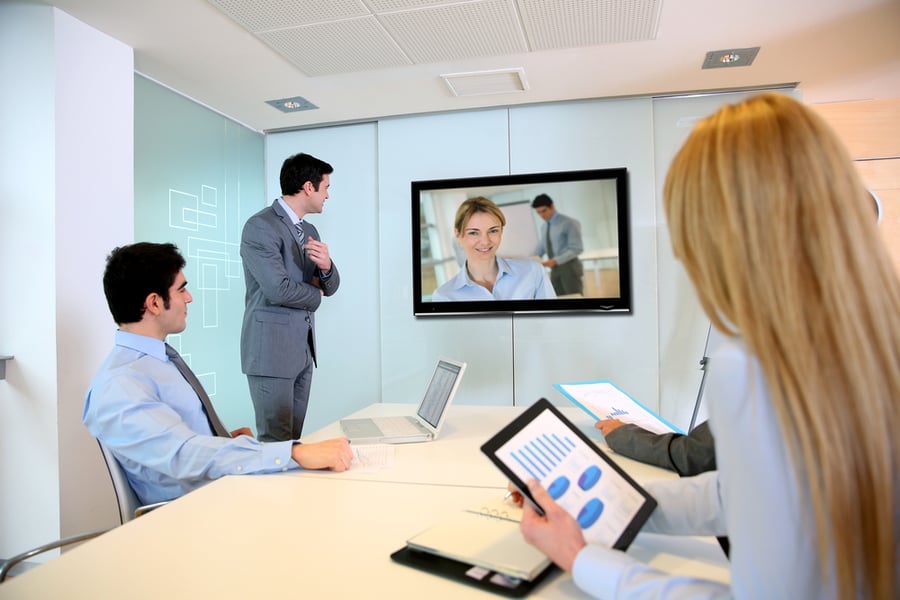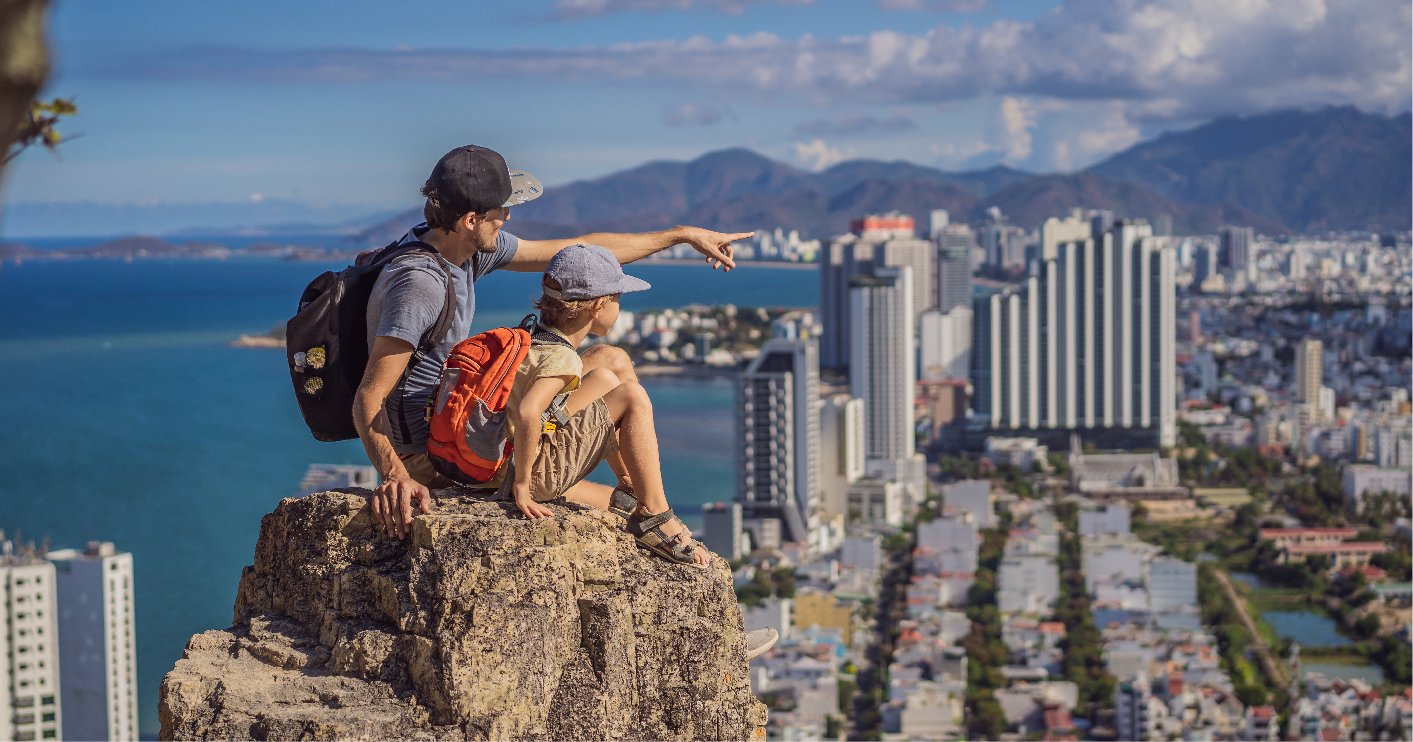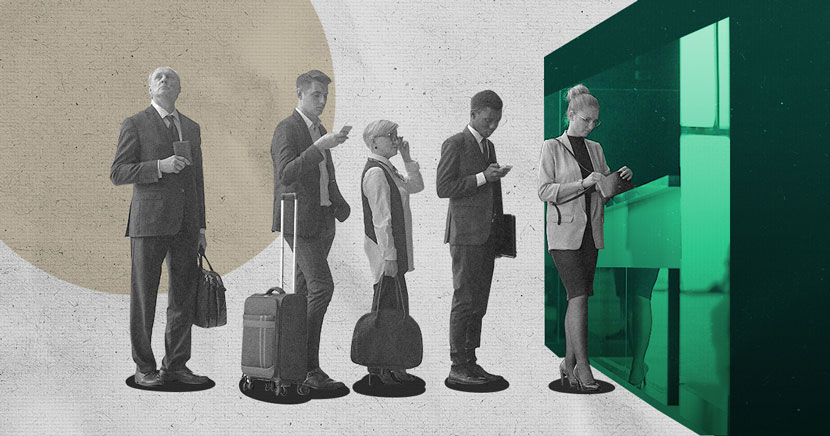For those with the opportunity to work from home during the COVID-19 pandemic, these months of virtual gatherings, kitchen table offices and sorry-I-was-on-mute interludes may make the option of traveling to an in-person meeting feel like a welcome relief. But with changing restrictions and new variants, it’s unclear when and how corporate travel will return to pre-pandemic levels.
The impacts of the pandemic on corporate travel cannot be overstated. Prior to the COVID-19 pandemic, business travel accounted for more than one fifth of the travel and hospitality sector, with global spend exceeding $1.4T in 2018. But by 2020, global business travel expenses had dropped by 52% worldwide, a reduction of roughly $94B. US airline capacity declined roughly 70% between 2019 and 2020 — a decline nearly four times greater than after the September 11, 2001 attacks and six times greater than after the 2008 financial crisis.Corporate travel is typically slower to recover from crises than leisure travel and a full return may take several years. Even when it does return, the impacts of the COVID-19 pandemic — coupled with climate change — may have altered certain aspects of business travel for the long-term.
All of this may seem dire, but these changes can also signal new opportunities for hotels to reach changing demographics and stand out in a transforming market. Here is a look at five ways hotels can navigate the winding, sometimes bumpy return to corporate travel.
See also:
-
Here's how one of Japan's top rated hotels combined luxury, safety, and cleanliness
-
How hotels use PressReader to keep guests and staff connected during COVID-19
1. Remote work is here to stay
One of the major shifts caused by the COVID-19 pandemic is the widespread transition to remote work. Today, nearly 40% of the workforce in the United States has the potential to work from anywhere, and 72% of executives report they have started to adopt permanent remote-working arrangements for some employees.
This shift has many potential ramifications for the travel industry, including the type and frequency of corporate travel. Digital nomads, for example — a travel trend that has more than doubled in popularity since 2018 — are a new category of work-live hybrid traveler who opt to take advantage of their opportunity to work from anywhere in the world. Slowmads, a new cousin of the digital nomad, take an even longer-term approach to working while traveling, often staying in one country for months at a time.
Building camaraderie in far-flung teams
With remote work, corporate travel may also take a more internal focus as companies seek increasingly creative ways to create camaraderie among their far-flung teams. Cromatics, a fully-remote creative agency based in Berlin, Germany, brought their distrubed team together pre-pandemic for an annual journey to a new destination. In 2019, their whole team spent several days camping in Switzerland, where they took part in team-building activities and ideation sessions.
While these kinds of in-person gatherings may not be possible in the near term, the sustained growth of remote work means these trips like those may find renewed demand moving forward, and even more travel categories may emerge.
Hotels can cater to these new categories of business travelers by appealing to the hybrid approach of remote work. Alongside entertainment and leisure-related amenities, properties can offer spaces and perks that cater to the work-from-anywhere types and help facilitate team-building.
2. New safety requirements
When returning to corporate travel, safety is paramount. Even if individual guests might be comfortable traveling off the beaten path, corporations tend to have health and safety measures they need to ensure for their employees. For corporate travel planners, availability of vaccines represents the top consideration when booking a conference, followed by low rates of recent COVID-19 infections and readily available COVID-19 testing.
Different jurisdictions may have different health requirements, but hotels can prioritize health and safety measures and seek global accreditation that follows the most stringent standards. This can help hotels stand out, not only among corporate and leisure travelers, but among event and conference planners moving forward.
3. Navigating uncertainty
In a recent survey, roughly 30% of executives say they have not heard about specific plans for corporate travel after the pandemic, and 28% said their companies’ plans were “vague.” A company planning a return to corporate travel tends to monitor three major factors: local indicators of public health and government regulations; vendors’ health and safety policies; and employees’ willingness to travel. These factors can change quickly and often, particularly with global travel restrictions lifting and lowering based on case numbers, new variants and vaccine rates.
All of this translates to some uncertainty and unpredictability for hotels. In late 2021, the leadup to the holidays coincided with the spread of the Omicron variant — and some major weather events — meaning flight cancellation rates saw a major increase.
Trip stacking: a risky trend
From December 24 to January 4, roughly 20,000 flights were canceled in the US alone, and 83,000 flights were delayed (the usual average for flight cancellation rates is between 2% and 17%, depending on the region). Some travelers, wary of their potential need to cancel last-minute, hopped on the risky trend of trip stacking, or booking multiple trips at once in case one needs to be canceled.
While last-minute cancellations can present a major challenge to hotels, easing traveler anxiety and uncertainty can help drive the industry’s recovery in the coming years. In fact, flexibility in flight dates and free cancellation were two of the top three considerations travelers have when considering their next trip. Offering flexibility in booking can be a great way to attract guests, both in the short and long term.
4. A phased recovery
The return to business travel will likely happen in phases, from industry to industry and role to role.
It is predicted that regional travel will return first. Companies are twice as likely to have stopped international business travel as domestic travel, and some countries are already seeing slight growth in domestic business travel.
There are also certain industries and roles that are likely to return to work more quickly, with manufacturing, construction and other geographically-dependant industries returning first, and healthcare, education and remote-friendly industries lagging behind.
According to McKinsey, the largest portion of business travel, accounting for roughly 60% of business-travel expenditure in 2019, will be fueled by what they call “the FOMO segment: those traveling to cultivate important client relationships.” These organizations will be motivated by their desire to build and maintain relationships with customers as a competitive advantage.
New opportunities for personalization
As hotels look for new ways to cater to business travelers, there is an opportunity to become more personalized based on industry and role within a company. For example, business travelers in manufacturing, in town to operate a specific worksite, may look for different experiences and amenities than a consultant traveling to cultivate important relationships with clients.
Using data to understand these specific demographics and micro-segments can ensure hotel properties are meeting the specific needs of their guests.
5. Work-friendly amenities
For many, the home office is a cleared-off corner of the dining-room table or a spot at the end of the bed. Internet connectivity might cut out midday when someone is home sick and streaming movies. Lunch could be a leftover piece of pizza snagged between meetings.
Travel, and especially business travel, can mean taking a break from the challenges of the home office and a change of scenery. Whether corporate travelers are staying for a day of meetings or checking in for a month of live-work experiences, truly work-friendly amenities can feel like a luxury.
More time spent plugged in
Of course, WiFi is a given for the corporate traveler, but there are a host of other creative and digital-focused amenities that can make working from a hotel feel even more productive than at home. What’s more, since many of the social aspects of work travel may not be available, travelers will be spending more time than usual plugged in from their rooms.
Subscriptions like PressReader allow hotels to give guests access to a personalized publication feed, meaning they can stay up to date on work-relevant news, local content or stories from home while traveling.
And for many travelers, a work trip may be their first time away from home in months. Thinking outside the usual corporate work perks toward more personalized luxuries, like wellness offerings and spa retreats, can help even the busiest traveler feel rested and ready to take on a challenging day.
When it could have been an email
Post-pandemic, more and more employers are rethinking which business travel is truly essential and which might be better served as an email or online meeting. That means we can expect to see more changes to corporate travel as organizations around the world explore their priorities and budgets in the months and years ahead.
While the return to business travel may not look the same as it did before, it has the opportunity to grow in meaningful, more climate-friendly ways that make travelers feel safe and comfortable.
CTA: Learn more about how hotels partner with PressReader to provide digital-friendly amenities or read The Insider for more actionable tips to navigate a changing travel landscape.







